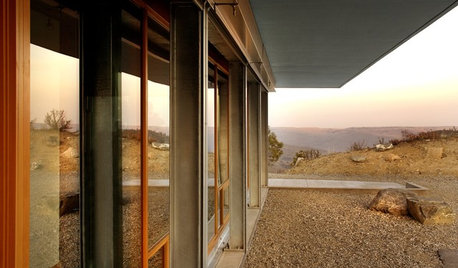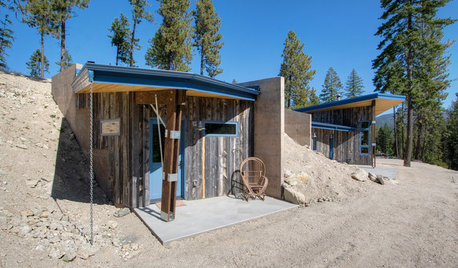Radon Mitigation - How to do it!
Debbie Downer
12 years ago
Related Stories

HEALTHY HOMEWhat's the Deal With Radon?
Get the facts on testing for this cancer-causing gas — and how to make your home safe if it shows up
Full Story
GREEN BUILDINGOff the Grid: Siting and Building to Conserve Energy
Look to low-tech solutions for big energy savings when you’re constructing a home
Full Story
HOUZZ TOURSHouzz Tour: Having Fun With a Half-Buried House
Layers of dirt help create energy efficiency and an unusual look on a steep slope in Washington state
Full Story
HEALTHY HOMEGet Cleaner Indoor Air Without Opening a Window
Mechanical ventilation can actually be better for your home than the natural kind. Find out the whys and hows here
Full Story
BASEMENTSRoom of the Day: A Renovated Basement With Room to Play
A large unused space becomes a host of rooms for playing, watching TV, hanging out and putting up guests
Full Story
SELLING YOUR HOUSEFix It or Not? What to Know When Prepping Your Home for Sale
Find out whether a repair is worth making before you put your house on the market
Full Story
SELLING YOUR HOUSEA Moving Diary: Lessons From Selling My Home
After 79 days of home cleaning, staging and — at last — selling, a mom comes away with a top must-do for her next abode
Full StoryMore Discussions








brickeyee
User
Related Professionals
Cuyahoga Falls Kitchen & Bathroom Designers · Haslett Kitchen & Bathroom Designers · Mooresville Kitchen & Bathroom Remodelers · Ogden Kitchen & Bathroom Remodelers · South Lake Tahoe Kitchen & Bathroom Remodelers · Gloucester City Interior Designers & Decorators · Washington Interior Designers & Decorators · Alhambra General Contractors · Bryn Mawr-Skyway General Contractors · Catonsville General Contractors · Delhi General Contractors · Ewing General Contractors · Gainesville General Contractors · Kyle General Contractors · Oxon Hill General Contractorsalphonse
brickeyee
User
Debbie DownerOriginal Author
brickeyee
User
Debbie DownerOriginal Author
brickeyee